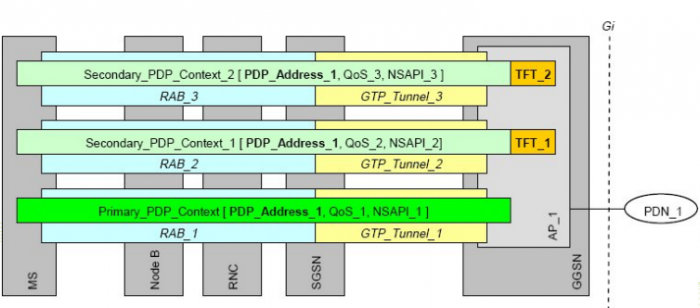TFT (Traffic Flow Template) is a classifier that matches on fields on the inner-IP of a GTP-U
tunnel. This in turn causes differentiated radio-bearer performance. It can match the following fields:
• Source address (with subnet mask)
• IP protocol number (TCP, UDP)
• Destination port range
• Source port range
• IPSec Security Parameter Index (SPI)
• Type of Service (TOS) (IPv4)
• Flow-Label (IPv6 only)
Up Link Traffic Flow Template (UL TFT) : Set of uplink packet filters in TFT
Downlink Traffic Flow Template (DL TFT) : Set of downlink packet filters in TFT
Whether using the static-TFT model or the dynamic Gx-signaled TFT model, the same sequence occurs:
a dedicated bearer (secondary PDP context) is created, and traffic is forced to match it. Operators can
create PDP contexts dynamically using Gx, in which traffic matching the TFT filters into the context
based on rules in the PCEF, or having dynamic PDP creation done by the packet gateway itself based on
traffic matching with pre-provisioned values. This can be useful if an upstream device on SGi will mark
packets matching certain conditions with DSCP.

The LTE version of the standards allows up to nine TFTs to be used per bearer. In prior revisions, there
is only one TFT allowed, which is important to note if QoS handoff between HSPA and LTE, or LTE and
CDMA is needed.
